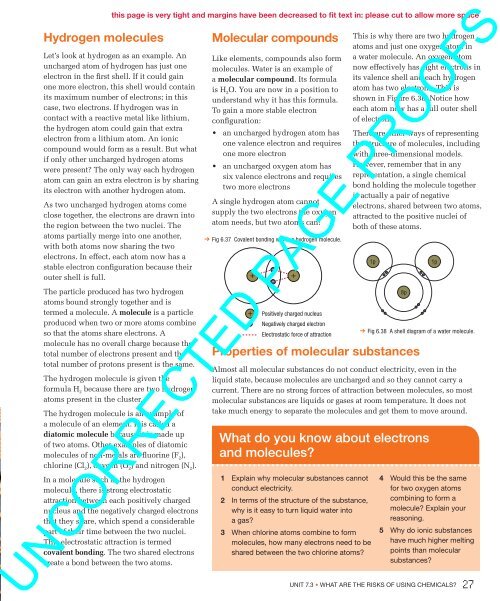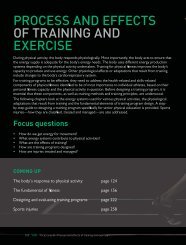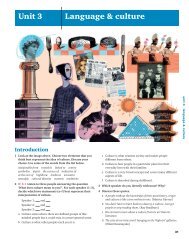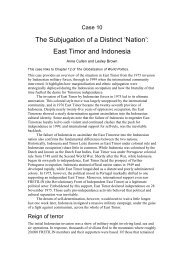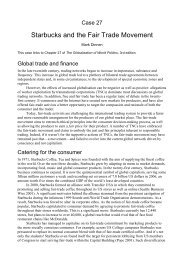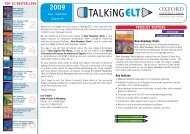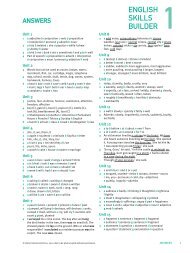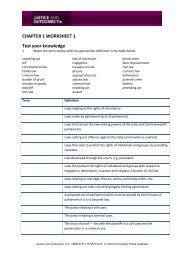2 Chapter 6 ⢠organising elements Organising elements
2 Chapter 6 ⢠organising elements Organising elements
2 Chapter 6 ⢠organising elements Organising elements
You also want an ePaper? Increase the reach of your titles
YUMPU automatically turns print PDFs into web optimized ePapers that Google loves.
Hydrogen molecules<br />
this page is very tight and margins have been decreased to fit text in: please cut to allow more space<br />
Let’s look at hydrogen as an example. An<br />
uncharged atom of hydrogen has just one<br />
electron in the first shell. If it could gain<br />
one more electron, this shell would contain<br />
its maximum number of electrons; in this<br />
case, two electrons. If hydrogen was in<br />
contact with a reactive metal like lithium,<br />
the hydrogen atom could gain that extra<br />
electron from a lithium atom. An ionic<br />
compound would form as a result. But what<br />
if only other uncharged hydrogen atoms<br />
were present? The only way each hydrogen<br />
atom can gain an extra electron is by sharing<br />
its electron with another hydrogen atom.<br />
As two uncharged hydrogen atoms come<br />
close together, the electrons are drawn into<br />
the region between the two nuclei. The<br />
atoms partially merge into one another,<br />
with both atoms now sharing the two<br />
electrons. In effect, each atom now has a<br />
stable electron configuration because their<br />
outer shell is full.<br />
The particle produced has two hydrogen<br />
atoms bound strongly together and is<br />
termed a molecule. A molecule is a particle<br />
produced when two or more atoms combine<br />
so that the atoms share electrons. A<br />
molecule has no overall charge because the<br />
total number of electrons present and the<br />
total number of protons present is the same.<br />
The hydrogen molecule is given the<br />
formula H 2 because there are two hydrogen<br />
atoms present in the cluster.<br />
The hydrogen molecule is an example of<br />
a molecule of an element. It is called a<br />
diatomic molecule because it is made up<br />
of two atoms. Other examples of diatomic<br />
molecules of non-metals are fluorine (F 2 ),<br />
chlorine (Cl 2 ), oxygen (O 2 ) and nitrogen (N 2 ).<br />
In a molecule such as the hydrogen<br />
molecule, there is strong electrostatic<br />
attraction between each positively charged<br />
nucleus and the negatively charged electrons<br />
that they share, which spend a considerable<br />
part of their time between the two nuclei.<br />
This electrostatic attraction is termed<br />
covalent bonding. The two shared electrons<br />
create a bond between the two atoms.<br />
Molecular compounds<br />
Like <strong>elements</strong>, compounds also form<br />
molecules. Water is an example of<br />
a molecular compound. Its formula<br />
is H 2 O. You are now in a position to<br />
understand why it has this formula.<br />
To gain a more stable electron<br />
configuration:<br />
• an uncharged hydrogen atom has<br />
one valence electron and requires<br />
one more electron<br />
• an uncharged oxygen atom has<br />
six valence electrons and requires<br />
two more electrons<br />
A single hydrogen atom cannot<br />
supply the two electrons the oxygen<br />
atom needs, but two atoms can!<br />
Fig 6.37 Covalent bonding within a hydrogen molecule.<br />
+ +<br />
+<br />
–<br />
–<br />
–<br />
Positively charged nucleus<br />
Negatively charged electron<br />
Electrostatic force of attraction<br />
1 Explain why molecular substances cannot<br />
conduct electricity.<br />
2 In terms of the structure of the substance,<br />
why is it easy to turn liquid water into<br />
a gas?<br />
3 When chlorine atoms combine to form<br />
molecules, how many electrons need to be<br />
shared between the two chlorine atoms?<br />
This is why there are two hydrogen<br />
atoms and just one oxygen atom in<br />
a water molecule. An oxygen atom<br />
now effectively has eight electrons in<br />
its valence shell and each hydrogen<br />
atom has two electrons. This is<br />
shown in Figure 6.38. Notice how<br />
each atom now has a full outer shell<br />
of electrons.<br />
There are other ways of representing<br />
the structure of molecules, including<br />
with three-dimensional models.<br />
However, remember that in any<br />
representation, a single chemical<br />
bond holding the molecule together<br />
is actually a pair of negative<br />
electrons, shared between two atoms,<br />
attracted to the positive nuclei of<br />
both of these atoms.<br />
Fig 6.38 A shell diagram of a water molecule.<br />
Properties of molecular substances<br />
Almost all molecular substances do not conduct electricity, even in the<br />
liquid state, because molecules are uncharged and so they cannot carry a<br />
current. There are no strong forces of attraction between molecules, so most<br />
molecular substances are liquids or gases at room temperature. It does not<br />
take much energy to separate the molecules and get them to move around.<br />
What do you know about electrons<br />
and molecules?<br />
1p<br />
4 Would this be the same<br />
for two oxygen atoms<br />
combining to form a<br />
molecule? Explain your<br />
reasoning.<br />
5 Why do ionic substances<br />
have much higher melting<br />
points than molecular<br />
substances?<br />
UNCORRECTED PAGE PROOFS<br />
Unit 7.3 • What are the risks of using chemicals? 27<br />
8p<br />
1p<br />
CAS_SB10_TXT_06_1pp.indd 27<br />
11/11/11 4:58 PM


